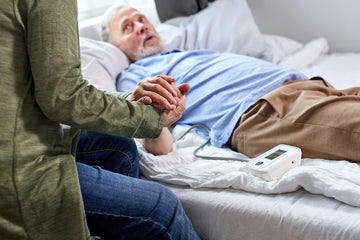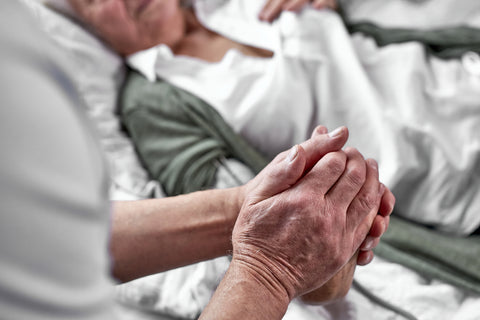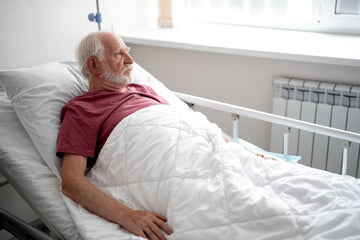5 Common Health Risk Factors in Bedridden Patients Prone to Bedsores
Feb 27, 2024

Hello, readers and caregivers! Today, we're delving into the world of bedsores, shedding light on the common health risk factors that deserve attention and care. While bedsores are a challenge, understanding the factors that contribute to their development is a significant step toward effective prevention. In this blog, we'll explore five common health risk factors, aiming to empower you with knowledge and strategies to provide the best bedsore care possible. So, let's embark on this journey of compassion, awareness, and proactive care!
The Complexity of Bedsores
Bedsores, also known as pressure ulcers, are not just a surface issue – they're a manifestation of underlying health factors. These sores occur when prolonged pressure, friction, or moisture affects specific areas of the skin, often in patients with limited mobility.
Identifying the Common Health Risk Factors
- Immobility:
When the body remains in the same position for extended periods, pressure on certain body parts can lead to reduced blood flow, tissue damage, and eventually bedsores. This is especially common in bedridden patients or those who use wheelchairs.
- Poor Nutrition:
A well-balanced diet rich in nutrients is essential for maintaining healthy skin. Inadequate nutrition can compromise the skin's ability to repair itself, increasing the risk of developing bedsores.
- Decreased Sensation:
Conditions like diabetes or neurological disorders can reduce sensation in certain areas of the body. When patients can't feel discomfort or pressure, they may not realize the need to change positions, leading to increased pressure and the potential for bedsores.

- Inadequate Hygiene:
Maintaining proper hygiene is crucial for preventing bedsores. Skin that is moist or soiled due to urine or face is more susceptible to irritation and breakdown.
- Friction and Shear:
When the skin rubs against a surface (friction) or when different layers of tissue slide against each other (shear), the skin's integrity can be compromised. This is particularly common when patients are moved or repositioned without proper technique.
Proactive Strategies for Prevention
- Regular Repositioning:
Encourage patients to change their position frequently, redistributing pressure and promoting healthy blood flow to vulnerable areas. This can significantly reduce the risk of developing bedsores.
- Nutrient-Rich Diet:
A balanced diet rich in protein, vitamins, and minerals is vital for skin health. Ensure that patients receive proper nutrition to support their skin's ability to repair and heal.

- Hygiene and Moisture Control:
Maintaining proper hygiene and keeping the skin clean and dry is essential. Use specialized skin care products like bed sore gel or barrier creams to create a protective layer against moisture and friction.
- Assistive Devices and Techniques:
For immobile patients, using specialized cushions, mattresses, and wheelchair pads can help distribute pressure more evenly. Proper lifting and repositioning techniques are also crucial to reduce friction and shear.
- Skincare Routine:
Incorporate a regular skincare routine that includes gentle cleansing, moisturizing, and inspection of the skin for early signs of irritation or redness.
Amplifying Care with Bed Sore Care Products
- What is a Bed Sore Gel?
Bed sore gel, like the innovative Soreze Bedsore Prevention Gel, is a powerful tool in the prevention of bedsores.
- How It Helps:
Soreze is a Silicone-based skin protectant bedsore gel that can be applied for the prevention of bedsores. It works by forming a thin, long-lasting, water-repellent, breathable, protective barrier film on the skin that reduces friction makes skin smooth and facilitates easy repositioning, and prevents bedsores. It is important to use such products to reduce friction with the skin and prevent bedsores.
Remember, your compassion and commitment to care make a significant impact. By recognizing the factors that contribute to bedsores and taking measures to address them, you're not only enhancing the quality of life for those in your care but also fostering a culture of empathy and proactive health management. So, let's continue this journey of awareness and care, ensuring that every step we take promotes comfort, well-being, and the prevention of bedsores.




